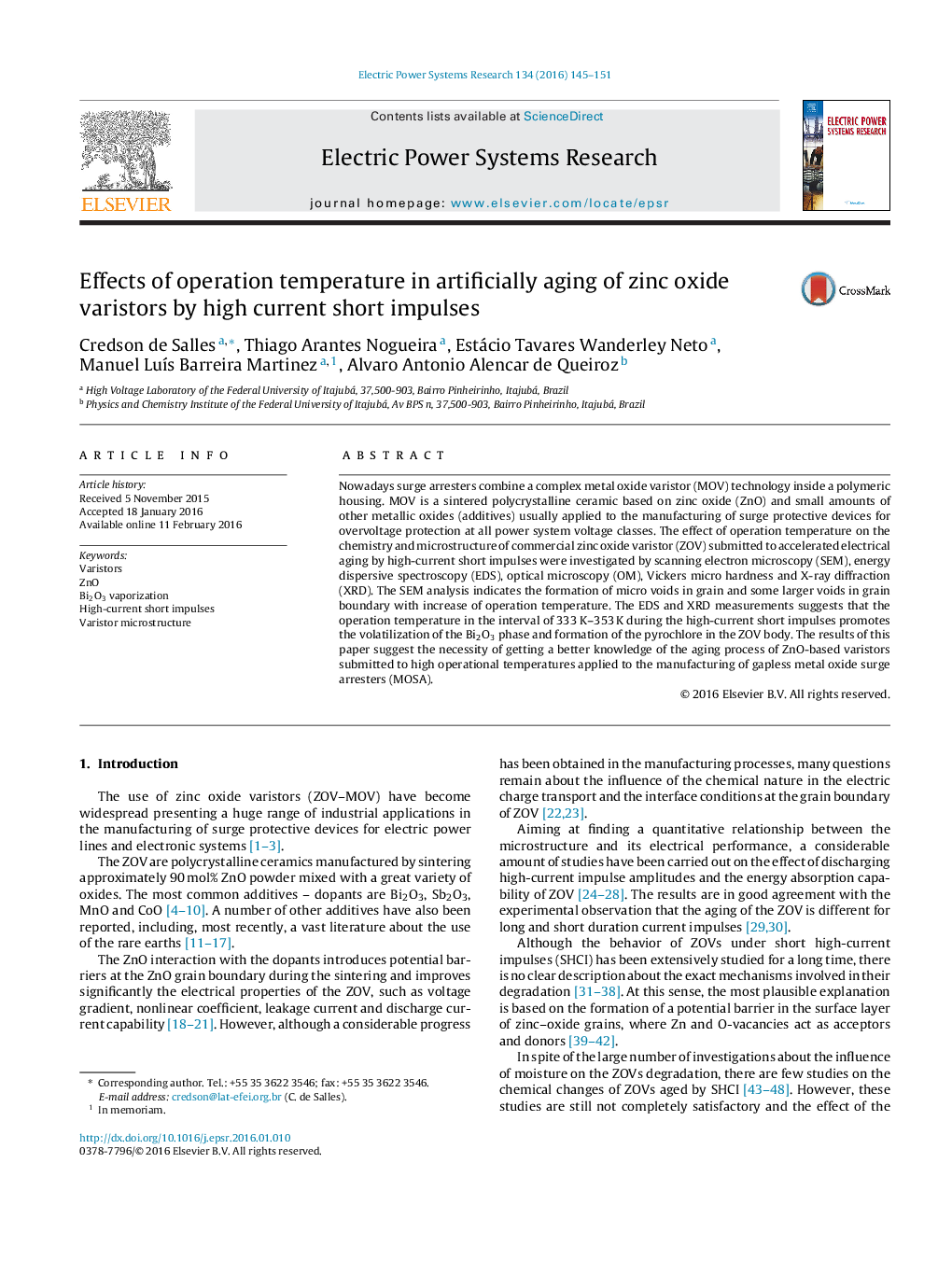| Article ID | Journal | Published Year | Pages | File Type |
|---|---|---|---|---|
| 704275 | Electric Power Systems Research | 2016 | 7 Pages |
Nowadays surge arresters combine a complex metal oxide varistor (MOV) technology inside a polymeric housing. MOV is a sintered polycrystalline ceramic based on zinc oxide (ZnO) and small amounts of other metallic oxides (additives) usually applied to the manufacturing of surge protective devices for overvoltage protection at all power system voltage classes. The effect of operation temperature on the chemistry and microstructure of commercial zinc oxide varistor (ZOV) submitted to accelerated electrical aging by high-current short impulses were investigated by scanning electron microscopy (SEM), energy dispersive spectroscopy (EDS), optical microscopy (OM), Vickers micro hardness and X-ray diffraction (XRD). The SEM analysis indicates the formation of micro voids in grain and some larger voids in grain boundary with increase of operation temperature. The EDS and XRD measurements suggests that the operation temperature in the interval of 333 K–353 K during the high-current short impulses promotes the volatilization of the Bi2O3 phase and formation of the pyrochlore in the ZOV body. The results of this paper suggest the necessity of getting a better knowledge of the aging process of ZnO-based varistors submitted to high operational temperatures applied to the manufacturing of gapless metal oxide surge arresters (MOSA).
